Sealants
Dental Office in London, ON – Northland Dental Centre
Sealants
The most likely location for a cavity to develop in your child’s mouth is on the chewing surfaces of the back teeth. Run your tongue over this area in your mouth, and you will feel the reason why: These surfaces are not smooth, as other areas of your teeth are. Instead, they are filled with tiny grooves referred to as “pits and fissures,” which trap bacteria and food particles. The bristles on a toothbrush can’t always reach all the way into these dark, moist little crevices. This creates the perfect conditions for tooth decay.
What’s more, a child’s newly erupted permanent teeth are not as resistant to decay as adult teeth are. The hard enamel coating that protects the teeth changes as it ages to become stronger. Fluoride, which is found in toothpaste and some drinking water — and in treatments provided at the dental office — can strengthen enamel, but, again, it’s hard to get fluoride into those pits and fissures on a regular basis. Fortunately, there is a good solution to this problem: dental sealants.
Dental sealants are invisible plastic resin coatings that smooth out the chewing surfaces of the back teeth, making them resistant to decay. A sealed tooth is far less likely to develop a cavity, require more expensive dental treatment later on, or, most importantly, cause your child pain.
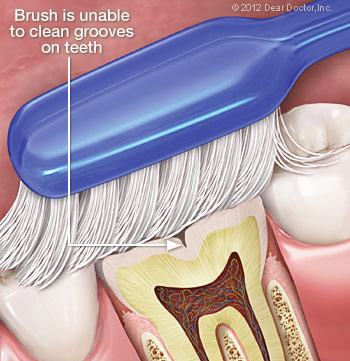
How Sealants Are Placed
You can think of a sealant as a mini plastic filling, though please reassure your child that it doesn’t “count” as having a cavity filled. Because tooth enamel does not contain any nerves, placing a sealant is painless and does not routinely require numbing shots. First, the tooth or teeth to be sealed are examined, and if any minimal decay is found, it will be gently removed. The tooth will then be cleaned and dried. Then a solution that will slightly roughen or “etch” the surface is applied, to make the sealing material adhere better. The tooth is then rinsed and dried again. The sealant is then painted on the tooth in liquid form and hardens in about a minute, sometimes with the help of a special curing light. That’s all there is to it!
A note about BPA: A 2012 study that received wide press coverage raised concerns that trace amounts of the chemical bisphenol-A (BPA) found in some (but not all) dental resins might contribute to behavioral problems in children. The study authors noted that while they had found an association, they had not actually proven that BPA in dental sealants causes these problems. In fact, BPA is far more prevalent in food and beverage packaging than in dental restorative materials. The American Academy of Pediatric Dentistry and the American Dental Association have since reaffirmed their support for the use of sealants.
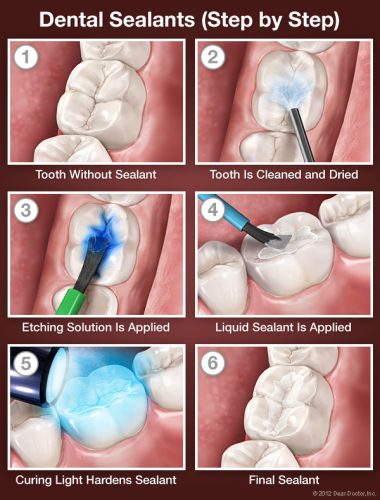
Taking Care of Sealants
Sealed teeth require the same conscientious dental hygiene as unsealed teeth. Your child should continue to brush and floss his or her teeth daily and have regular professional cleanings. Checking for wear and tear on the sealants is important, though they should last for up to 10 years. During this time, your child will benefit from a preventive treatment proven to reduce decay by more than 70 percent.
Related Articles
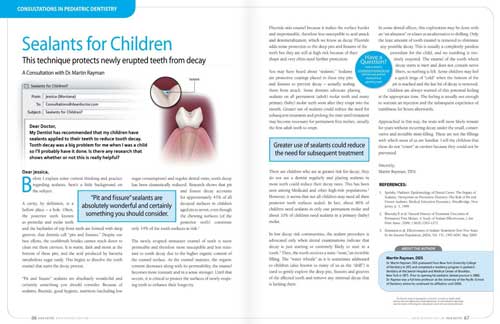
Sealants for Children
The tiny grooves in your child’s back teeth are ideal places for cavities to form. But you can take a proactive role in preventing this with dental sealants. These are protective plastic resin coatings placed in these tiny pits and fissures of teeth, actually sealing them from attack. It’s a wonderful method of decay prevention that every parent should consider… Read Article
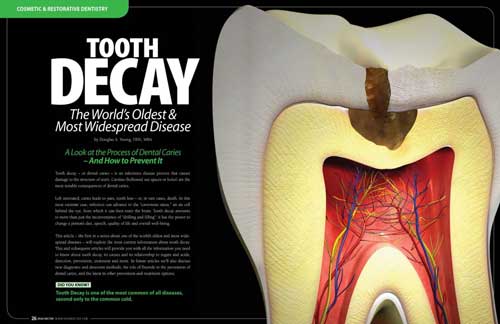
Tooth Decay — A Preventable Disease
Tooth Decay is perhaps the number one reason children and adults lose teeth during their lifetime. Yet many people don’t realize that it is a preventable infection. This article explores the causes of tooth decay, its prevention, and the relationship to bacteria, sugars, and acids… Read Article
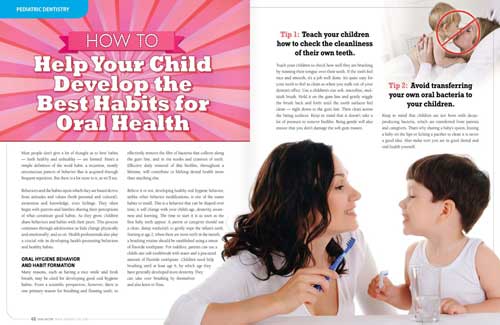
How to Help Your Child Develop the Best Habits for Oral Health
Proper oral health habits are easy to learn — and lead to behaviors that result in lifelong dental health. And the time to begin is as soon as your child’s first baby teeth appear. From toothbrushing for your toddler to helping your teenager stay away from tobacco, Dear Doctormagazine offers the most important tips for healthy habit formation through childhood and beyond… Read Article
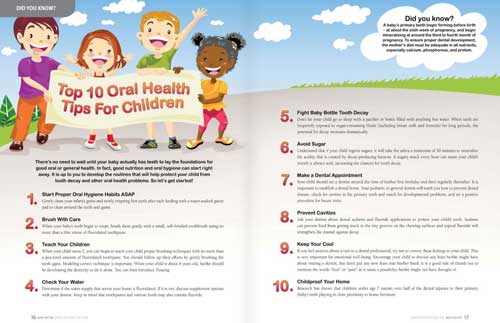
Top 10 Oral Health Tips for Children
There’s no need to wait until your baby actually has teeth to lay the foundations for good oral or general health. In fact, good nutrition and oral hygiene can start right away. It is up to you to develop the routines that will help protect your child from tooth decay and other oral health problems. So let’s get started… Read Article
